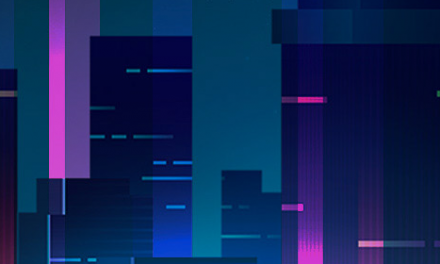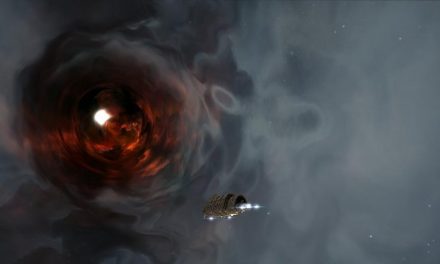With the rise of postwar existentialism in the 1950s and the grim realization of the ability for humanity to be the cause of its own extinction, writers and directors took to the big screen to share their visions with the world. Of course books like 1984 (released in 1948) and Brave New World (1931) continued a niche trend of authors of the past (e.g. The Time Machine in 1895) to explore the possible consequences of our actions, with the wider adoption of video media, more people than ever were being exposed to existentialist, nihilist, and fatalist ideas.
Movies such as Planet of the Apes (1968), Soylent Green (1973), Logan’s Run, and Network (both 1976) showed worlds where greed, overpopulation, and consumer culture were taken to the extreme – or as some would say, to their logical conclusion. In the 1980s dystopian movies received a big boost with action films such as the Running Man (1987), Blade Runner (1982), and Escape from New York (1981). The idea of a grittier, darker future was catching on with the masses.
Though Dungeons and Dragons (TSR 1974) and other fantasy role-playing games had become a staple of imaginative recreation by the late 1980s, it was the release of a new generation of games such as Shadowrun (FASA 1989), Cyberpunk 2013 (Talsorian 1988), and Warhammer 40,000 (Games Workshop 1987) that brought the genre of dark future storytelling to a larger audience, capitalizing on the growing need for flights of fancy in the face of an increasingly corporate and class-stratified world. Soon thereafter games like Vampire: the Masquerade (White Wolf 1991) and Rifts (Palladium 1990) expanded the market, and comic stores across the country began to expand their hobbyist gaming selections.
A question often brought up in conversations on psychology is “why do people like scary movies?” Fear elicits an anxiety response, the fight-or-flight reaction when our body feels its in danger. Few people say they enjoy stress and anxiety, and yet droves of people flock to horror and thriller franchises in seemingly endless droves. One posited reason is that, ultimately, it’s a safe experience – no matter what happens on-screen, the viewers themselves are unharmed and can return to their normal lives; thereby it is a way to experience extraordinary stresses or trauma without the lasting effects thereof. Whatever they see, they know that it’ll be okay in the end.
I feel the rise of near-future role-playing games mirrored the rising popularity (in the public consciousness) of horror and thriller movies. Not because the themes explored were necessarily the same, but because they were a fanciful and safe place to explore the fears and stresses that were building in everyday life. Much the same way that fantasy authors have used the genre to explore real issues and problems of the day, these role-playing games allowed adults and teenagers to explore the “what if” of modern society, taken to an extreme.
Though I have played and run Shadowrun games nearly since its release, and actively contributed to Vampire: the Masquerade settings for twenty years, I am seeing an active and growing disinterest in the gaming population for dystopian media. Sure, video games such as the Deus Ex franchise (Eidos) and Watch_Dogs 2 (Ubisoft) – among many others – explore themes of helplessness in the face of governmental and corporate overreach, and reach record sales numbers for consoles and computers, but video games are a more consumption-based media than the collaborative experience of table-top or live-action role-playing.
In the post-WWII era, much dystopian media was dire in its predictions, presenting worlds in which the new status quo was unlikely to change, no matter how valiantly the protagonists try to improve their own circumstances. As the 1980s and 1990s ushered in an area of rapid expansion, growth, and the idea of individual social mobility, my personal experience is that much of the dystopian stories being told, or settings explored, had a silver lining to the grit and grime of everyday life. Books from Neal Stephenson and the emerging speculative fiction-genre role-playing games spoke of downtrodden working classes with a tinge of promise, that ordinary people could and would stand up and make a difference. It reflected an idea that while society was changing, and possibly not for the better, not all hope was lost and individuals could – and would – rise to the occasion.
This is the first week of 2019 and while many hold hope for the future, after twenty years actively embroiled in a Middle East conflict with no end in sight, the recent rise and purported acceptance of popularized nationalism and tribalism, and trust in public servants at a historic low, many gamers I find are turning away from dystopian settings, because settings of danger and darkness aren’t very exciting when the real world starts looking the same. Fantasy is supposed to be fantastical, not just a different shade of what lay outside.
This morning a friend introduced me to the term “hope-punk,” a recent writing genre following the naming convention of “cyberpunk” (gritty techno-future) and “steampunk” (advanced steam engines, mechanical cogs, and automatons). Described as “the opposite of grimdark” by writer Alexandra Rowland in a message that kicked off the internet-spread genre, hopepunk aims to inspire stories where optimism is weaponized, serving as both sword and shield against the terrors and horrors of modern reality. To me its very reminiscent of the idea of serfs creating or continuing stories about knights in shining armour defeating mythical dragons, as escapes from the drudgery and hopelessness of their own situations.
Will we see a larger movement in role-playing games away from the disastrous and crime-stricken settings that have remained so popular for thirty years? It’s hard to say. With on-demand printing and the increasingly low cost of entry for game designers, I expect that the market will be, if it hasn’t already been, greatly expanded in what kinds of content is created. The larger question I feel is whether or not these “new” genres are going to last, to become as iconic as the dreary futures previous artists brought to life.















